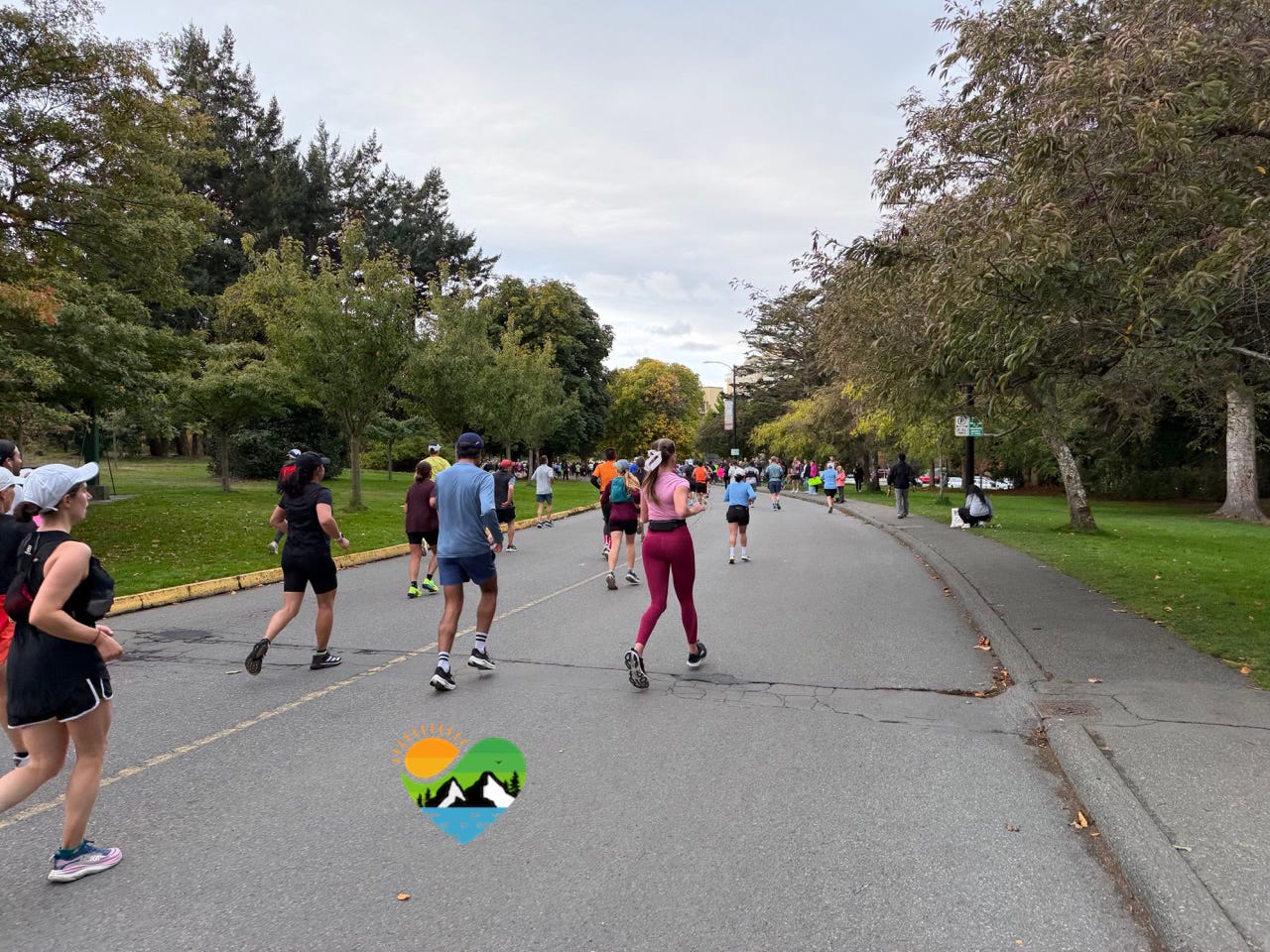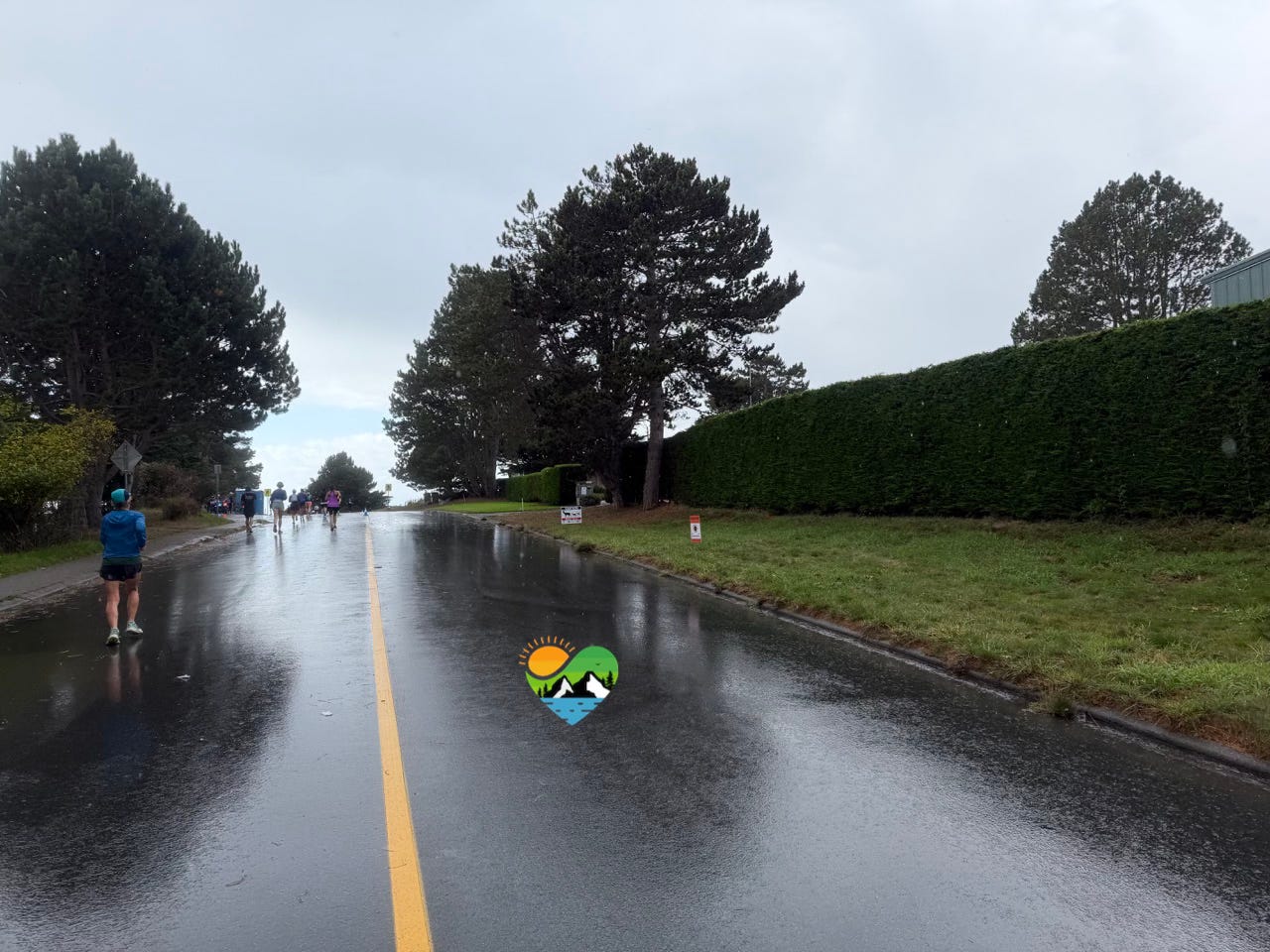Three Runs a Week: The Marathon Training Experiment That Worked
My unconventional training cycle with faster recovery and more energy, without sacrificing performance.
Cutting back to three runs a week changed everything.
Marathon training used to consume me. Between work, travel, photography, and everything else I do, trying to fit in five or six runs every week often felt like juggling chainsaws. I loved the process, but not the exhaustion that came with it. After completing 15 marathons in the last three years, I wanted to see if I could train differently: more intentionally, less chaotically, and still perform at the same level.
So, for my most recent training cycle leading up to the 2025 Victoria Marathon, I decided to experiment. I followed a 16-week hybrid plan built around just 3 (yes three) runs per week, and filled the rest of my schedule with purposeful cross-training. The idea was to become a more complete athlete, not just a better runner.
The result? My marathon time was nearly identical to my Amsterdam finish last year, but I felt entirely different. I recovered faster, ran stronger, and crossed the line with a little energy to spare.
Rethinking “More Is Better”
The running world often celebrates volume. Every plan I looked at (Nike Run Club, Running Room, Runna) follows the same principle: more miles, more gains. They build toward one or two long runs of about 32K (sometimes a little more) before tapering down to race day.
I’ve tried those “double peak” programs before. They work, but they’re demanding. For a couch-to-marathon program, they work well to help a runner finish their first marathon without injury. But when you’re balancing real life, and maybe want to go beyond that “once in a lifetime” marathon, this kind of training is hard to sustain. It also may not produce the results you’re hoping for.
Every weekend for three months, I ran 32 kilometres.
This time, I flipped the model. Instead of building toward a single 32K long run, I made that distance my baseline. Every weekend for three months, I ran 32 kilometres. No exceptions1. It wasn’t glamorous, but it worked. My body adapted to the distance so thoroughly that by the time I hit the marathon, 42K didn’t feel like an alien number. 32K became the new normal, and the marathon just felt like another long Sunday run, with a little add-on. Easy, right?
The Three-Run Framework
Each week followed a predictable rhythm with speed and incline training, a steady aerobic run, and a Sunday long run of 32K. That’s it. Three focused runs. No filler mileage. No “just because” jogs to pad the total weekly mileage on Strava. Honestly, taking more days off running was hard, but it paid off.
Reducing run volume gave me something far more valuable than time: it gave me energy.
Where possible, I filled the off days with optional yoga, strength work, and a casual lap swim session. Yoga became a ritual for mobility and mindfulness. Strength training (especially core and posterior chain work) added the stability I’d been missing.2
While I didn’t particularly enjoy the strength work, the cross-training made me overall stronger. My legs were more resilient, my posture better, and my energy more consistent. Those gains showed up in the marathon itself, where I felt balanced and steady instead of depleted.3 While not every week felt equally amazing, the consistency of showing up and sticking to the program made a difference.
Race Day: Victoria Marathon
Victoria greeted me with its usual unpredictability during Thanksgiving weekend: cool air, some wind, and enough rain to keep you humble.4 Yes, contrary to my summer training, I added a few extra layers that morning to stay warm.
From the start, I could tell something was different. I wasn’t fighting fatigue like in Amsterdam, where the narrow, crowded sections and coastal winds drained me early.5 This time, my stride felt grounded, my breathing steady. I ran evenly, avoided the late-race fade, and crossed the finish line with a time remarkably close to Amsterdam, but with a little more left in the tank.
That’s the real victory: not shaving off a few minutes, but finishing a marathon feeling like you could do it again. Not every race needs to be a personal best attempt, sometimes the real success doesn’t measure on a number on my watch.
The Aftermath: Faster Recovery, Better Feeling
Post-race recovery told the real story. Usually, I’d spend days hobbling around, stairs becoming my mortal enemy. This time, I was back to walking normally within a few hours. My energy rebounded faster, and while I still needed recovery, I didn’t have the deep fatigue that usually follows long-distance events.
Clearly, the body had adapted not just to running, but to training smarter. By alternating intensity, integrating recovery, and keeping mileage purposeful, I created a rhythm my body could sustain, and even thrive on.
Who This Is For
Let’s be clear: this program may not be ideal for first-time marathoners. It builds on a foundation of running history: a few years of consistent mileage, multiple races, and an understanding of how your body handles stress.
But if you’ve already crossed a few finish lines and are looking to evolve, this method might be worth exploring. Maybe you’re balancing work, family, and training. Maybe you’re tired of plans that leave you exhausted or injured. Or maybe, like me, you simply want to enjoy the process again.
Three runs a week can absolutely get you to across the finish line if you focus on structure, cross-training, and consistency. You’ll save time, reduce stress, and perhaps rediscover the joy that got you into running in the first place.
The Three-Run Framework
If you’d like to see exactly how I structured this hybrid plan, I’ve made my 16-week schedule available exclusively to VIP members of Living by Experience.
Continue below to download the full plan I used for the Victoria Marathon below, complete with distance targets, cross-training framework, and notes from each phase and component of my training cycle.
Consider this post your invitation to rethink what marathon training can look like. You don’t have to run every day to run well. Sometimes, less is more, and smarter is faster.
Keep reading with a 7-day free trial
Subscribe to Living by Experience to keep reading this post and get 7 days of free access to the full post archives.




